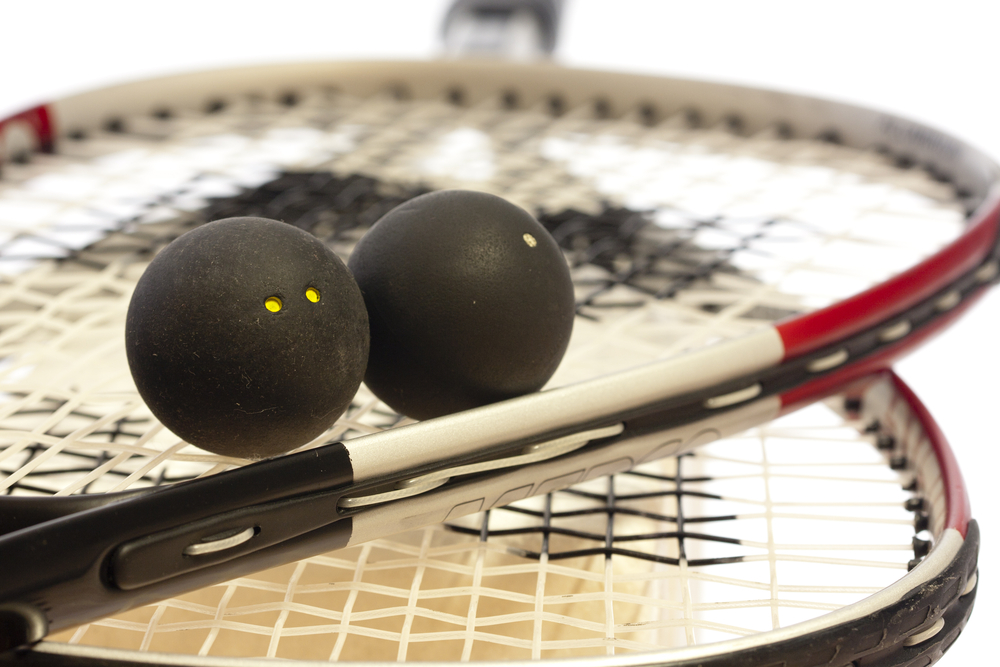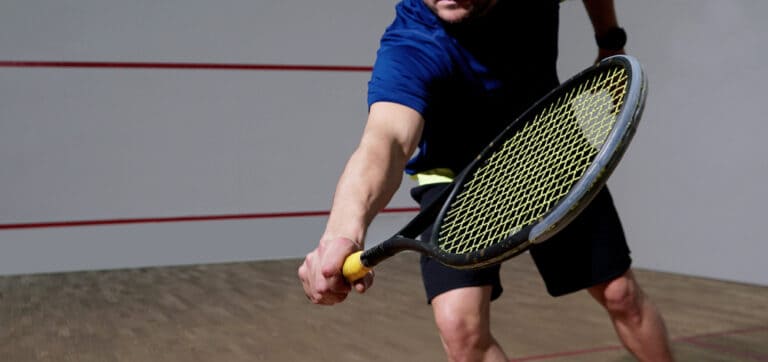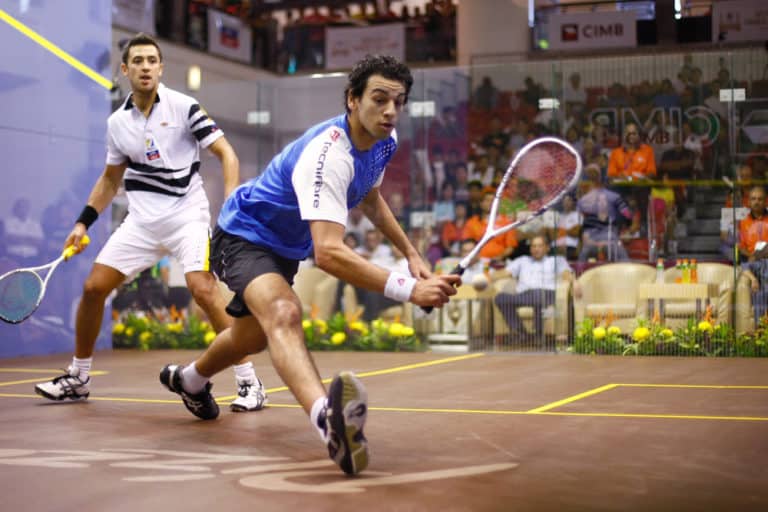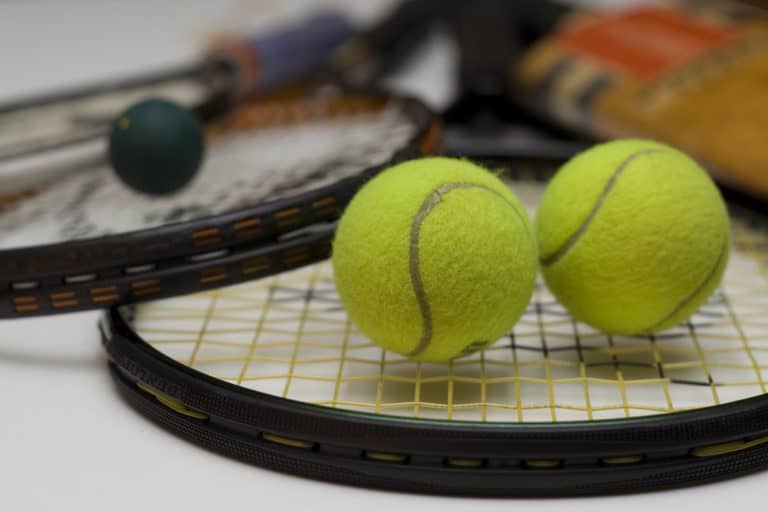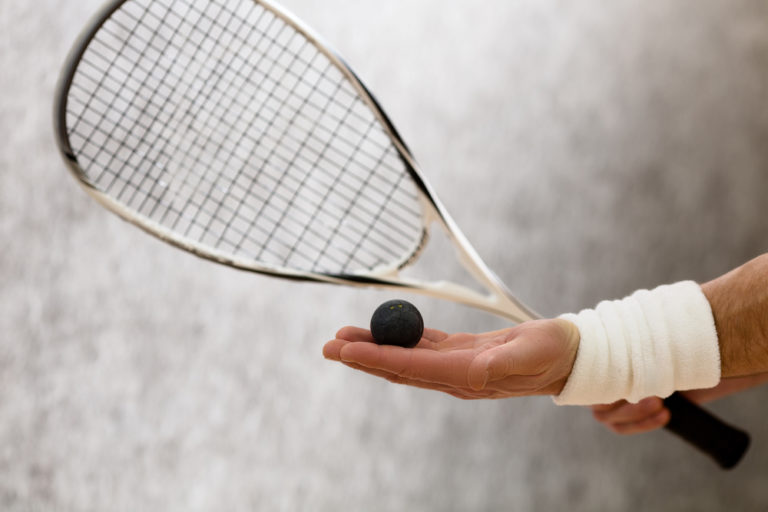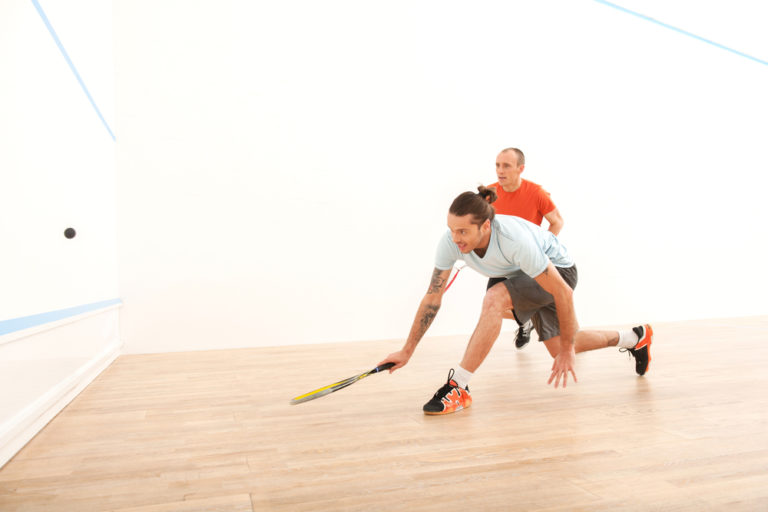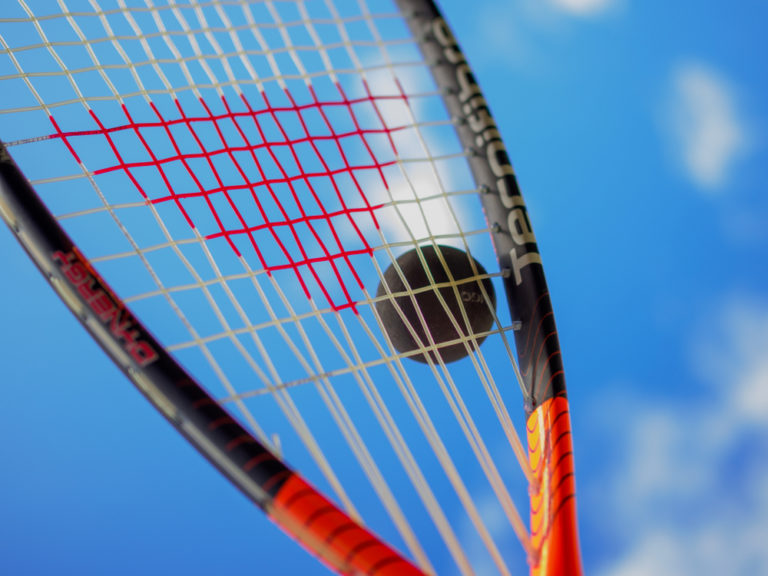What Squash Strings Should You Use?
Thankfully only a few pieces of equipment are needed to play squash, and one of these is your racket. With every shot, though, there is an aspect of your racket that takes the blows from the ball, which are your strings. In many cases (but not all), the racket you purchase will come fitted with poor-quality strings; therefore, it is a great idea to consider which strings you should use.
The squash strings you should use are determined by what you desire from the strings; you may be looking for power, durability, control, comfort, and the ability to put spin on the ball. Our top picks are: Tecnifibre 305, X-One Biphase, DYNAMIX VP, and Ashaway is another excellent brand.
Some people find that the default strings are more than adequate for the game, especially if you purchase a more high-end racket. However, with experience and trial and error, you will discover that you perform better with certain strings than others. This can be a frustrating process, which is why it is good to know your best options and other details.
Which Squash Strings Should You Use?
We can draw a comparison between other types of equipment and squash racket strings; for example, car tires made from softer natural rubber offer more grip and better comfort than artificial tires. The same can be said about boxing gloves; genuine leather gloves are often preferred over their synthetic counterparts.
And so it is with the strings in your squash racket; they will often come kitted out prestrung with thicker and artificial strings. The plus side to this is that the lifespan on these strings is typically more prolonged, but you lose a great deal regarding comfort and control of the ball while you are playing.
Some may not mind this, and from the start, we wish to clarify that this is a guide to aid you in discovering what strings you should use and not a list of hard and fast rules you must stick to. The final choice will be yours to make, and it typically comes down to preference and frequency of play. However, with all that said, some strings are more popular and widely used.
The most loved brands on the market are Tecnifibre and Ashaway; they tend to be more expensive than some other brands. Still, they are worth the money, especially if you take your squash seriously or intend to do so.
If you look at the majority of professional squash players, you will find that there is one brand and version of string they all enjoy and relish playing with; this is the famous Tecnifibre 305 squash string. Its popularity is because it offers exceptional comfort and control (which prestrung strings usually provide very little of).
If you are hoping for more power, then the Tecnifibre X-One Biphase is the string for you. Below we shall discuss these strings and others from both Tecnifibre and Ashaway. Both of these brands offer good strings that come in different thicknesses; however, the Ashaway is often slightly cheaper or at least offers cheaper alternatives, which still provide excellent performance.
Tecnifibre 305
As mentioned, this string is used by many professional players, and if you watch pro squash, you will notice many of their rackets are strung with the telltale green string. It is so popular because it offers that level of comfort which many desire, gives the player greater control, and it is easy to put a lot of spin on the ball with this string.
The downside to this string and many similar ones is that they offer more than outstanding performance; they are not exceptionally durable and long-lasting. If you purchase this string and enjoy the results you get from it, be aware that you will most likely need to have your racket restrung (if you are lucky) each month or every second month.
Tecnifibre X-One Biphase
The X-One Biphase is, without a doubt, one of, if not the pinnacle, in terms of power performance. This string was explicitly designed to aid you in the amount of power that is driven behind hitting the ball. We shall get to the tension of strings later on, but our advice would be to have the strings strung at 25 pounds and then gauge for yourself if you wish to lower or increase that.
Despite the higher power output from this string, it also helps improve one’s control of the ball. This does take some time, though, as you need to get used to not needing as much of a backswing (if you maintain the same stroke length, be prepared for that ball to travel incredibly fast). This string’s gauge (or thickness) is roughly 18 gauge, or 1.18mm.
Tecnifibre DYNAMIX VP
This is a good all-rounder and may be the string you are looking for if you are searching for something that offers more than one or two primary features. This string is an excellent blend of control and power and is also adequately durable.
This string is available in three different thicknesses, with the middle size being the one we recommend trying out first; it sits at 1.20mm. The factory default for Tecnifibre’s top-of-the-line rackets is this string, although the thickness of the stock string is slightly thicker and sits at 1.25mm. If you purchase one of these rackets and intend to restring it, opt for the 1.20mm.
Ashaway SuperNick ZX Micro
Like many of the others offered by Ashaway, this string has more of what players call “grit.” This allows you to “cut” the ball, meaning you can put more spin on the ball. This string offers a greater level of control, but there is a noticeable difference in power between this string and something like the Tecnifibre X-One Biphase, which is renowned for its power output.
This string is somewhat thinner than the Tecnifibre DYNAMIX VP, which is known for its durability. The Ashaway SuperNick ZX Micro sits at a thickness of 1.15mm, which does mean that a downside here is that it is slightly less durable than other strings.
Ashaway SuperNick XL
This option made the list as it has been around for some time, is reliable, and at an affordable cost. It is also soft and has good “grit,” meaning the amount of spin you can place on the ball will be more than sufficient. However, it is not as crisp and advanced as the newer strings on the market, and it also does not provide as much power, but with its 1.25mm thickness, it is more durable.
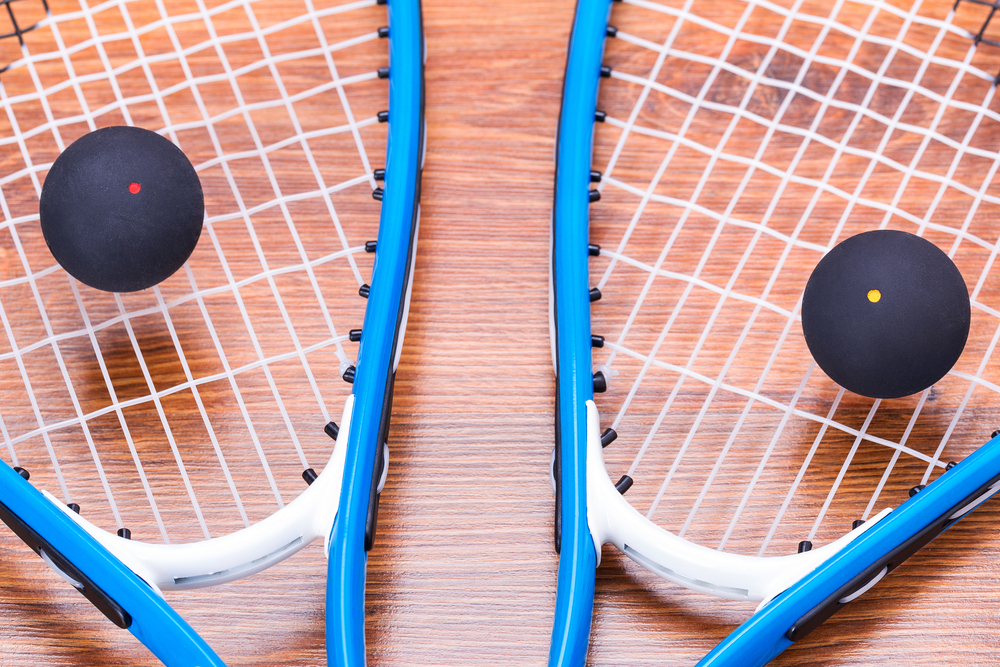
Things That Can Impact Your Choice Of Strings
Have we not already discussed the things that will help us determine what squash string we should look for regarding our desired results? Yes, but other things contribute to the choice of strings for your racket. Below we shall discuss these in detail and keep them in mind, as well as the performance aspects you will be looking for.
Your Racket Type Must Be Taken Into Consideration
There is an opinion that many people have, especially those who are just starting their squash journey, that the brand and type of strings you decide to use has a more significant impact on your play than the kind of racket you are playing with. This is deeply misguided, and the truth is that the strings you choose to utilize, depend significantly on the racket and the sort of frame it has.
Power, for example, (one of the attributes you may be looking for) is reduced when the strings are tighter. It might mean slightly more control over the ball, especially if you are a beginner, but as you develop your game, you will discover the trampoline effect. This is where the more stretch your strings offer, the more power there is as the ball is “catapulted” forward as you hit it.
More elongated racket frames will offer you more power, and thus you will have more flexibility in your choice of strings; however, rackets with a more rounded frame will cause the strings to be tauter. This means that you will have less power behind your shots (unless you are physically stronger), but there will be an element of ease of control.
The Weather And Climate Of Your Area Are Relevant
You would not think that something like a region’s weather or climate could affect an indoor sport such as squash. There may be cases where the squash courts have air-conditioning in the building, but it is unlikely, as most squash centers are rather large buildings, and the indoor temperature will not be much warmer or cooler than outdoors.
So here we come to the point where we discuss the nature of the squash ball and how the weather, climate, and temperature can affect its play. If you have ever been on a squash court, hit the ball, or played a full game, you will know that the ball needs to be warmed up. And to do this, you will need to hit the ball hard enough to get it primed for play.
The issue is that if you do not warm it up appropriately, especially in colder conditions, you will have a dismal game. Therefore if you are from a place where the weather is relatively cold most of the time, then you are advised to purchase strings that will off the most power generation. This will not be an issue in warmer climates, and therefore, you may want strings that offer better control.
How Much Tension Should Your Squash Strings Have?
If you are looking for power from your racket, then, as mentioned, you want to opt to string your racket, so there is less tension on the strings. When a string is under low tension, as discussed, it will stretch more efficiently, and collectively all will launch the ball with greater force.
Conversely, if you have strings strung at a higher tension, the strings will stretch far less; this aids in providing the player with greater control over the ball and allows them to hit more accurately.
Suppose you are playing the more popular singles squash game. In that case, the high string tension sits between 29-30 pounds, an excellent average that will give you both good power and control is 27-28 pounds, and the lower spectrum for string tension sits at 25 pounds (or sometimes even less, for highly skilled players).
How Thick Should Your Squash Strings Be?
If you want strings that bend and stretch more efficiently to offer you a boost in power, then you want to opt for thinner strings. Additionally, thinner strings add more “bite,” allowing you to place more spin on the ball. So if thinner strings offer us all these benefits, why should we even consider thicker strings? That is due to the lack of durability and a higher chance of breaking.
What Is String Gauge?
String gauge refers to the thickness of any given string; the critical thing to remember is that the lesser the number of the gauge, the thicker the string will be. Your most common strings are 16, 17, and 18 gauges. So, therefore, the 16 gauge (1.3mm) is your thickest string out of these three. 17 gauge (1.2mm) is a comfortable medium, and 18 gauge (1.1mm) is going to be the thinnest.
Unless you are a higher-skilled player and you do not mind changing your strings regularly, we recommend avoiding the 18 gauge. Additionally, the 16 gauge string will give you far more durability and last longer, but it offers less “bite” and overall power output. Therefore, going with the 17 gauge is advisable, which gives you the best of both worlds.
Conclusion
We have mentioned the top brands and made recommendations regarding what some of the best strings are, even if you are purchasing on a budget. We discussed the effect racket shape has on your string selection, the tension of your strings, the way the climate and temperature can affect your choice as well, and the thickness of the strings.
The vital takeaway from this article is to know what you want to achieve with your strings; if you are looking for power and the ability to put spin on the ball, combine thin strings with an elongated racket. For control and durability, opt for thicker strings at a higher level of tension.
References
- https://www.squashpoint.com/blogs/blog/stringing-your-racket-this-is-what-you-should-know/#
- https://www.squashsource.com/squash-strings/
- https://www.squashsource.com/squash-strings/
- https://www.string-doctor.com/single-post/squash-string-review-the-top-strings
- https://boastsquash.com/blog-post-2/
- https://www.squashpoint.com/blogs/blog/stringing-your-racket-this-is-what-you-should-know/
- https://sportscentaur.com/restring-a-squash-racket-cost-facts-strings/

